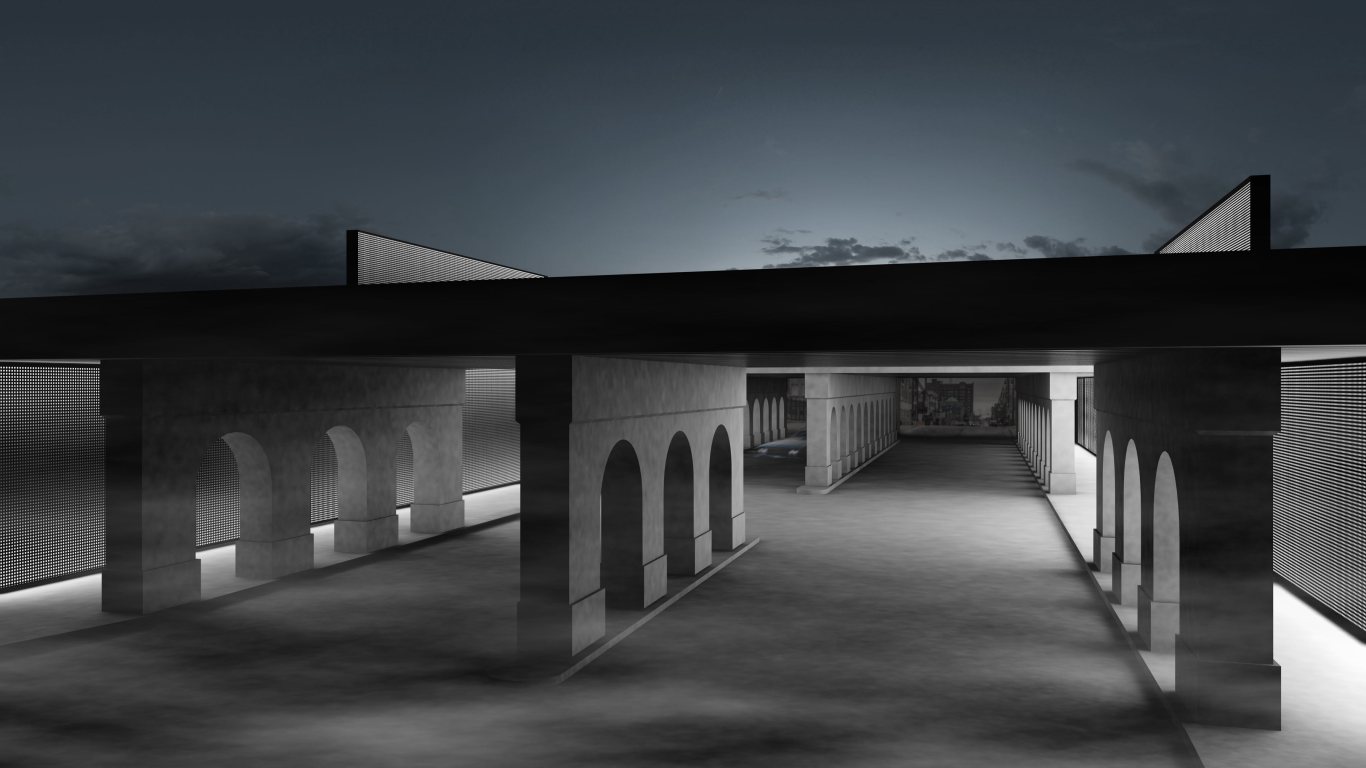Viaduct Gallery
Detroit, Michigan, USA, 2014
This competition for Detroit’s midtown called for an “art+light” installation to “give these industrial bridges* new life—making them a choice destination rather than a place to pass through”.
(* Two viaducts in Detroit’s midtown (at 2nd and Cass Ave.) that have seen most of Detroit’s industrial heritage come as raw materials and leave as finished products.)
When visiting the site, it became self-evident that there was much more at stake. Where there is, from an urban perspective, so incredibly vast a potential, it would be short-sighted to merely give the viaducts a facelift.
Viaducts
In a world where anything begins to interact seamlessly with everything, viaducts —these constructs whose only purpose is to let two distinct entities cross so that they don’t connect with each other— have a strange aura of a different, almost charmingly clumsy era.
At first, the viaducts on 2nd and Cass Avenue in central Detroit are just such constructs which serve no other purpose than to penetrate the else unsurmountable wall that are the Grand Trunk Railroad tracks.
Yet these viaducts in the middle of Detroit’s TechTown are of a special breed. They have the irresistible potential of becoming the portals to a world of dynamic connections, an interactive gallery by and of Detroit.
On top of the viaducts, four train tracks carry trains at intriguingly irregular intervals; sights and sounds of passenger and freight trains of mile-long endlessness are constantly changing Detroit’s landscapes.
When passing underneath, a brief break in the arched rhythm opens up like a clearing in a forest’s dense depths, as if the viaducts were not separating north and south but the portals to an otherworld between them. The viaducts are the portals to myriad encounters.
Portals
In an interactive play of light, the viaducts become attractors. Between the viaducts and the rediscovered interstices, the Viaduct Gallery is an urban device for an ever-changing ambience.
In the middle, where a 36ft gap between the railroad tracks creates an intriguing space under the sky, 12ft-tall gates open up towards the sides. With the gates closed, the viaducts are galleries of sight and sounds. With the gates open, viaducts extend to a rediscovered space within the city.
Behind these gates awaits a space of hidden opportunity. Dare we extend the scope of the viaduct competition and, at least speculatively tap into these green pockets? The viaducts then become the focal points of a much larger agenda.
Smart Wall
With a simple gesture —walls along the long sides of the viaducts that take up and emphasise the rhythms of the site— the viaducts receive more than a facelift: Whilst being based on simple elements, these walls are capable of complex compositions of light.
Even more, the robust infrastructural backbone allows for myriad plug-ins and add-ons making the Viaduct Gallery a live canvas for the 21st century.
Instrument
We proposed a device based on very simple elements that can easily be appropriated by local citizens and artists. Simply consisting of interactive walls allowing for plug-ins and add-ons the project transforms the viaducts into a live canvas for the 21st century. The Viaduct Gallery is an instrument which can be controlled to specifically choreograph a certain scenario or to interactively respond to input.
The Viaduct Gallery is a place where the city is a constantly evolving symphony.
Within that interstitial link are spaces of unanticipated opportunities that can provide Detroit’s Techtown with unique cultural venues and public green pockets. By activating these slumbering spaces with events the viaducts become attractors not only for the many institutions in the vicinity but for a myriad of usages for these unique spaces.
With their location in the middle of Detroit’s TechTown, these viaducts have the irresistible potential of becoming the portals to a world of dynamic connections, an interactive gallery by and for Detroit.
Detroit, Michigan, USA, 2014
Type
Status
Team
Florian Busch, Antoine Vaxelaire
Collaboration with: Aaron Jones, Wes Taylor, Gjergji Prendi, Carlos Garcia
Client: Midtown Inc.
Structure
Installation under two existing viaducts in Midtown Detroit.
402 LED-strips behind perforated-steel panels, controlled and configurable through a set of DMC

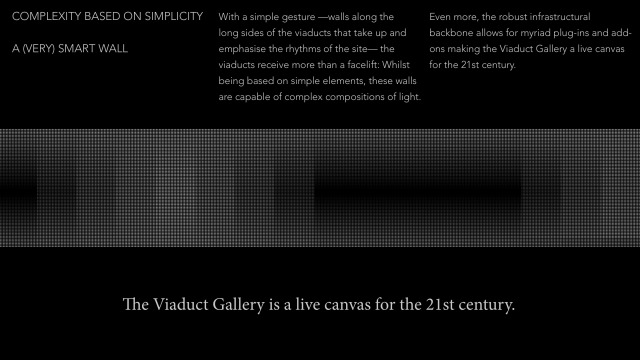
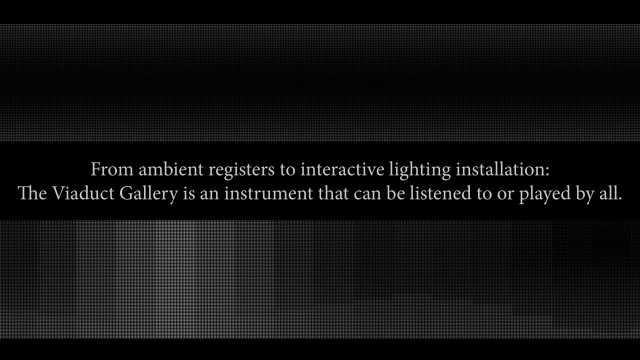
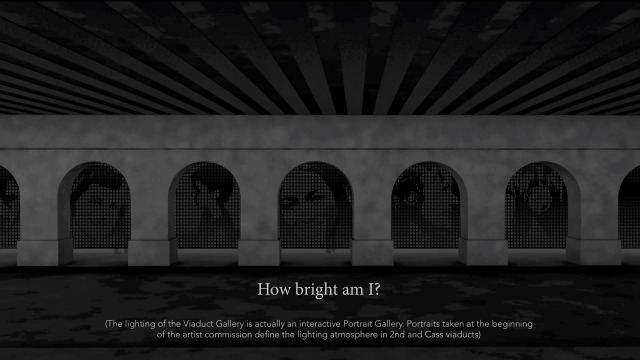
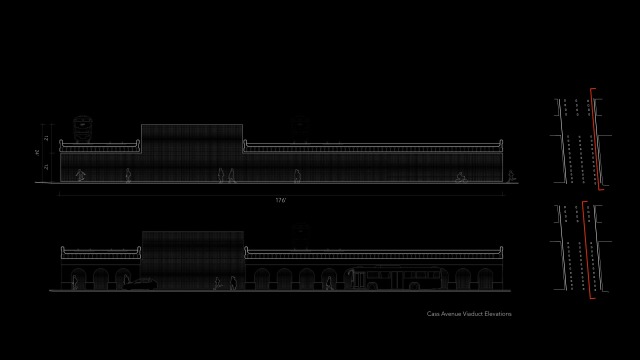
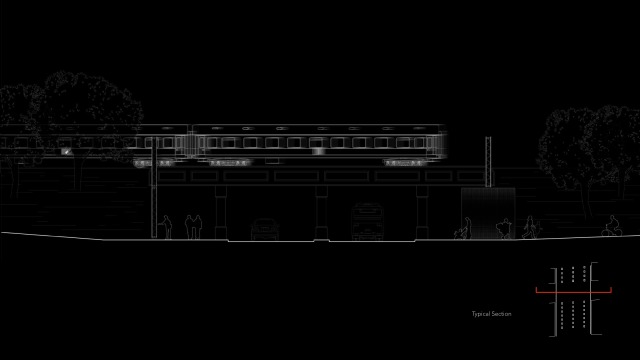
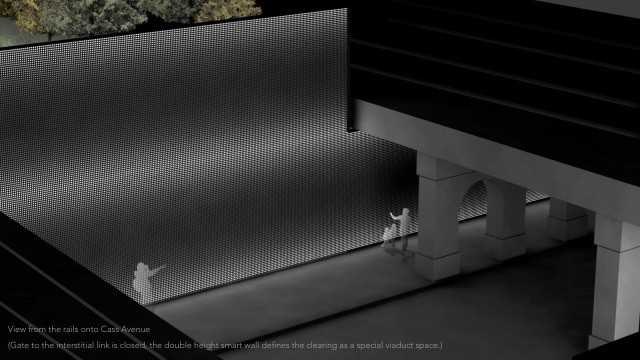
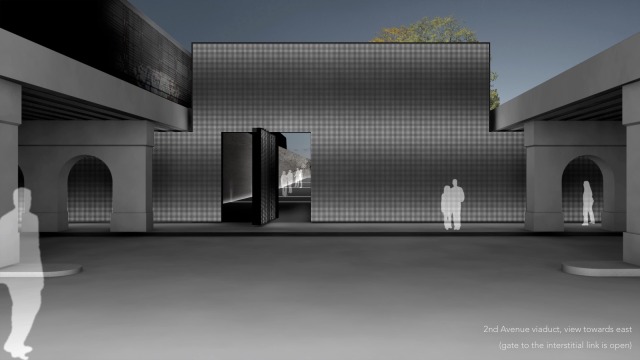
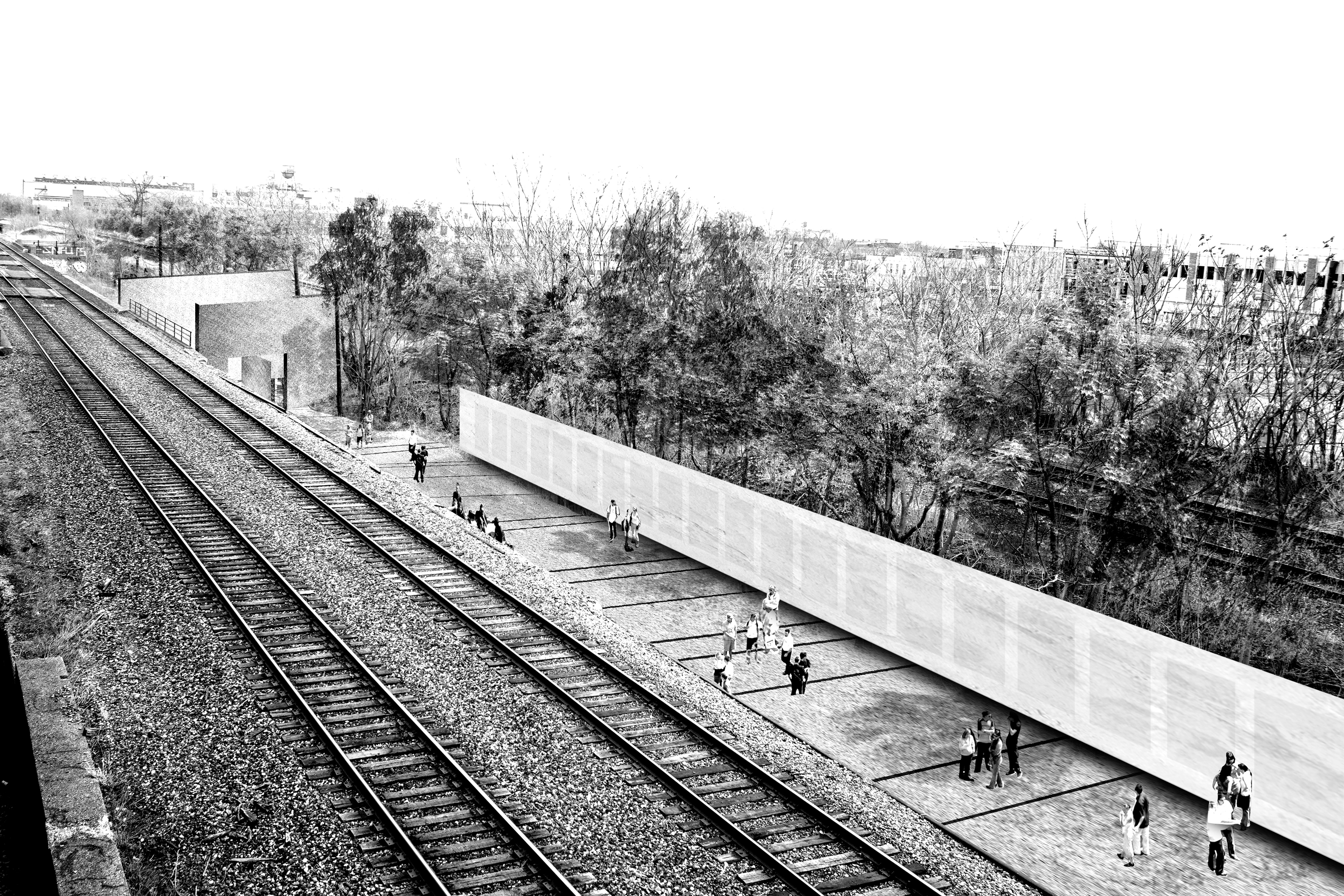
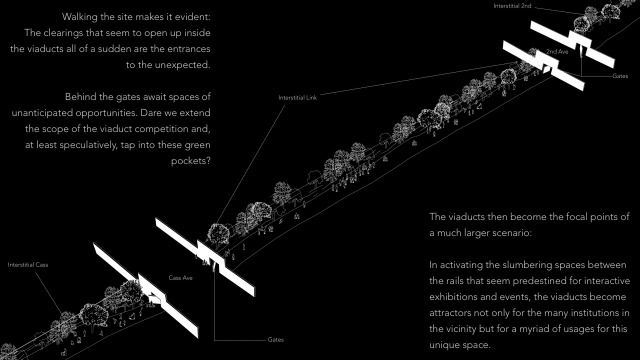
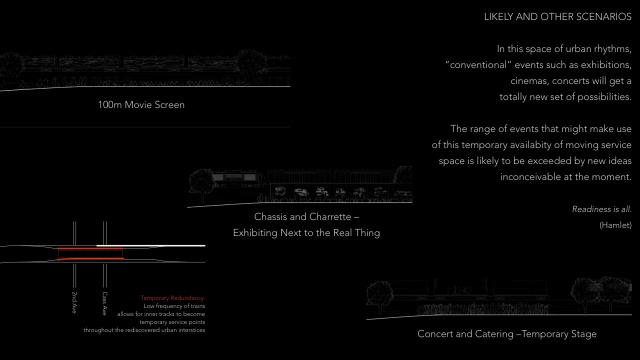
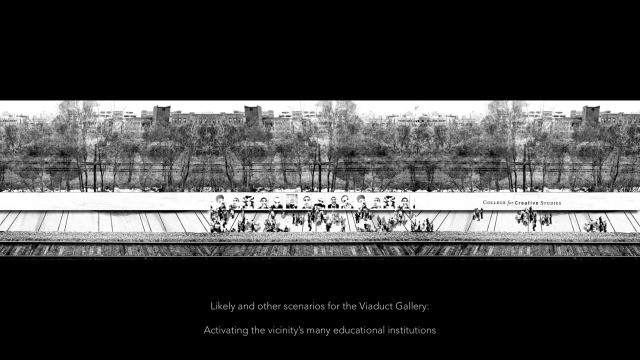
Related Projects:
- Konzerthaus Nürnberg, 2017
- Kiso Town Hall, 2017
- The Floating Stadium, 2016—2017
- Science Island Kaunas, 2016
- Museo de Arte de Lima, 2016
- Itsukushima Miyajimaguchi Terminal, 2016
- Tagacho Community Centre, 2015
- Viaduct Gallery, 2014
- Ota Culture Centre, 2014
- Viaduct Gallery, 2014
- A Symmetry, 2009
- neon, 2009
- Itsukushima Miyajimaguchi Terminal, 2016
- Viaduct Gallery, 2014
- Kinmen Ferry Terminal, 2014
- I'T, 2019
- Science Island Kaunas, 2016
- Museo de Arte de Lima, 2016
- K8, 2014—2015
- Viaduct Gallery, 2014
- House of Hungarian Music, 2014
- Guggenheim Helsinki, 2014
- Ota Culture Centre, 2014
- Taichung City Cultural Center, 2013
- Haus der Zukunft Berlin, 2012
- Tokyo Designers Week Art Galleries, 2011
- Tokyo Designers Week 2011, 2011
- RG Project, 2009
- Berlin-Tokyo|Tokyo-Berlin, 2006
- Museo de Arte de Lima, 2016
- Itsukushima Miyajimaguchi Terminal, 2016
- Viaduct Gallery, 2014
- Kinmen Ferry Terminal, 2014
